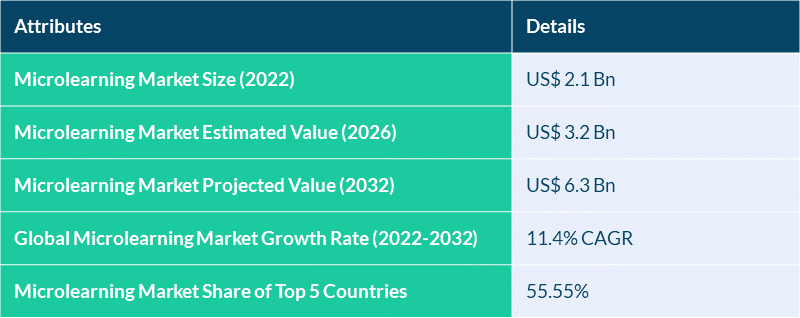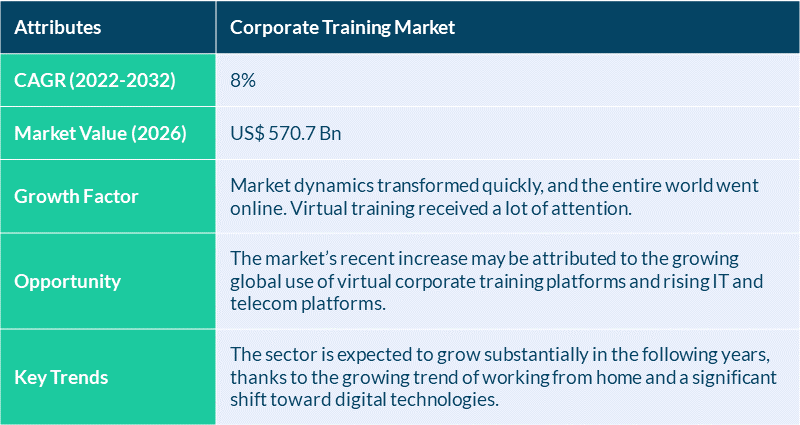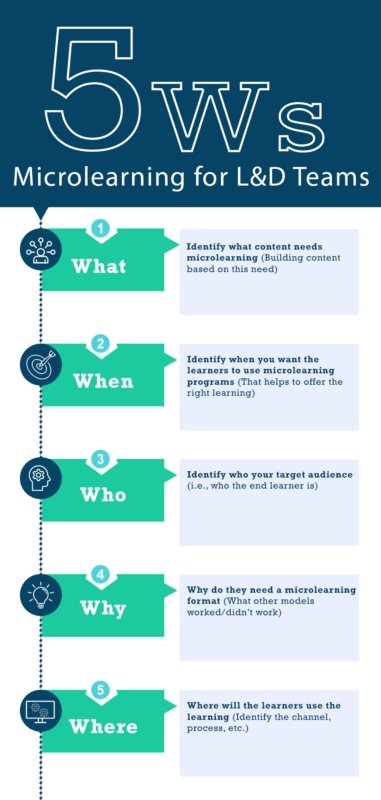The Role Of Microlearning In Corporate Training
John heads the L&D team of a leading MNC. He and his team want to specialize in creating microlearning content for their workforce, which is very engaging and easily accessible. They presently look after the corporate training needs of the overall organization. Despite this, during the recent leadership review meeting, he heard from most of the project managers that they see their workforce as very disengaged. What strategy should John implement so that it helps in boosting the performance of the workforce and, at the same time, engages them in the long run?
I am sure the majority of you who are reading this would probably concur that John and anybody else who leads L&D teams worry about this on a daily basis. With the growing millennial workforce, each one coming with different IQ and EQ levels, how do the L&D teams find the right fit? Seems like a herculean task, right? But what if I told you that the solution to John’s conundrum is simple?
Microlearning is the key!
In this article, let me guide you on how to make microlearning effective and offer ways in which you can successfully implement microlearning in your organization. Being tech-savvy and digitally equipped, the trend is skewed towards eLearning, and more so towards microlearning. Read on to understand why organizations choose microlearning and prefer it over the other training methods.
What Is Microlearning?
Microlearning, as the name suggests, refers to learning that is broken down into smaller bits for easy understanding. As a concept, this type of learning was introduced by a German psychologist, Hermann Ebbinghaus, who conducted research and studies on human memory. It was noticed that this type of learning helps in quick assimilation and stays on the top of the mind with good recall value for the learners.
Microlearning is a flexible and one of the most effective forms of training that can be used in a variety of ways to enhance individual and organizational performance. It delivers short bites of learning, each addressing a single learning objective.
What Role Does Microlearning Play In Corporate Training?
Microlearning has become the most popular method of training employees to achieve organizational goals because of its wide range of utility, ease of training, speed, and strong recall value (see Figure 1). It helps the company save money and time in addition to costs. It wouldn’t be an exaggeration to say today’s corporate training would be incomplete without microlearning! Read on to understand why I say microlearning is integral in corporate training.
It’s a misconception that microlearning is always based on videos. In order to keep learners interested, many organizations use animations, infographics, mobile applications, quizzes, simulations, games, eBooks, and podcasts. Microlearning programs engage people of all ages. Ideally, I prefer microlearning sessions that are less than or around 5–7 minutes.

Figure 1A: Market insights on the microlearning industry. Compiled from Microlearning Market Outlook [1]

Figure 1B: Market insights on corporate training. Compiled from Microlearning Market Outlook [1]
Benefits Of Microlearning
There are myriad advantages of microlearning, and here is a summary of a few reasons why John and his team should explore it for their organization.
1. Short Bites Of Content
Microlearning allows us to break down information and organize it into smaller bites. As it focuses on one learning objective at a time, microlearning makes it easier for both the instructor and the participant.
2. Higher Retention Rate
Microlearning boosts the learner’s attention and information retention. The content is designed in such a way that it helps in retaining the modern learners’ attention with the wide range of engaging course content.
3. Improves Employee Performance
Microlearning has become one of the most tried-and-tested ways of boosting employee performance, as it enables on-the-job training. It allows and encourages continuous learning in the organization. With higher knowledge retention and employee engagement, microlearning directly helps improve employee performance.
4. Allows Evaluation And Assessment
The good news is microlearning can also be measured in terms of its ROI. The most popular types of assessments are quizzes, flashcards, interactive videos, simulations, polls, fun games, etc. Isn’t that good news for John and other L&D managers who are reading this? Since microlearning allows assessments for each piece of learning content, it helps measure effective learner engagement. For example, let’s say John and his project managers train their workforce on software installation using an app loaded with short learning videos. Here, the ROI would be the number of successful software installations before the learning and after the learning.
5. Learner-Centric
Microlearning can fit into any learner’s calendar/schedule, given the short form of content and the focus on the learner’s need. It can cater to the specific needs of the learner, and since we can access and gauge the learning, it helps the learners in creating a valuable impact on the organization.
6. Mobile-Friendly
Microlearning content can be accessed by a wide range of people anytime, as it is mobile-friendly. It is a no-brainer that microlearning is also popularly known as “mlearning” (mobile learning is also known as “mlearning”).
Challenges Of Microlearning
Now imagine John wants to use microlearning for his training needs and say he uses it for his compliance training, which ideally focuses on multiple topics or tasks. Do you think it can be done in a microlearning format? The answer is a big no!
With its short format, microlearning might not suit all types of learning. Additionally, large complex learning that cannot be condensed into a short format becomes difficult in microlearning. Imagine a microlearning course to train a healthcare professional in performing a medical procedure. I agree that it would be disastrous not having real-life experience.
Also, breaking down a large program into bite-sized learning modules, each with a unique learning objective, can be quite challenging. But if done with care, this can never be a challenge in the first place. Imagine a firefighter training for fire safety using a microlearning format. It might work for understanding theory and showcasing their fire training manual. But to get hands-on experience, the staff will need mock fire drills to train them efficiently.
It is evident from above that the advantages clearly outweigh the challenges of microlearning. Now that you have a clear understanding of the benefits and possible challenges of microlearning, what method would you recommend to John for his organization’s long-term learning objectives?

CommLab India
Big Picture
During the COVID-19 pandemic, the eLearning sector grew exponentially, and the shift towards digital learning is further expected to increase substantially in the coming years. In the age of “less is more,” microlearning fits the bill for the majority of your corporate training needs. Given the shorter attention span of Gen Z, won’t you agree with me that microlearning is the way going forward?

